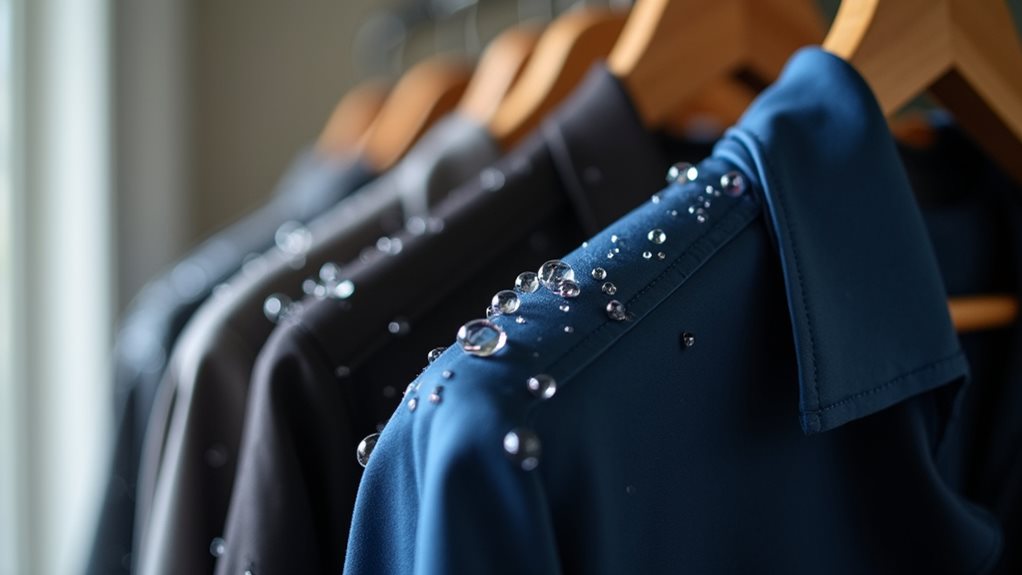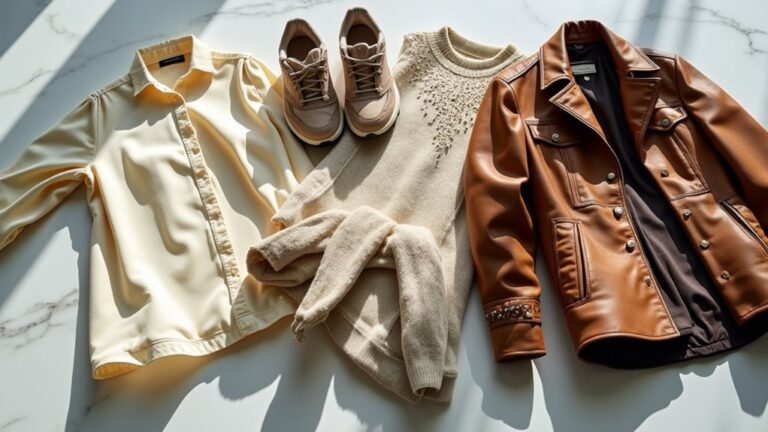Yes, your dry clean only clothes can get wet, but you’ll likely regret it – water causes these delicate fabrics to shrink, lose their shape, and sometimes bleed color like a watercolor painting gone wrong. If it happens, don’t panic-wring the garment; instead, gently blot excess moisture and hang it to air dry before rushing to your dry cleaner for damage control, because understanding the right recovery steps can mean the difference between saving and ruining your favorite pieces.
What Happens When Dry Clean Only Fabrics Get Wet
When I first discovered my favorite silk blouse had gotten caught in an unexpected downpour, I learned the hard way that “dry clean only” labels aren’t just suggestions—they’re serious warnings about what water can do to delicate fabrics.
Water exposure wreaks havoc on these materials, causing shrinkage that’ll leave your clothes looking like they belong to your little sister, and loss of shape that transforms elegant silhouettes into sad, wrinkled messes.
You’ll also face color bleeding that can turn your pristine white shirt into a tie-dye disaster 🎨. If this happens to you, resist the urge to panic-wring the fabric—instead, let it air dry naturally and head straight to professional cleaning before irreversible damage sets in permanently.
While traditional dry cleaning uses chemicals like perchloroethylene, many facilities now offer safer alternatives such as wet cleaning and liquid CO2 that can effectively treat water-damaged delicate fabrics.
Emergency Steps for Wet Dry Clean Only Garments
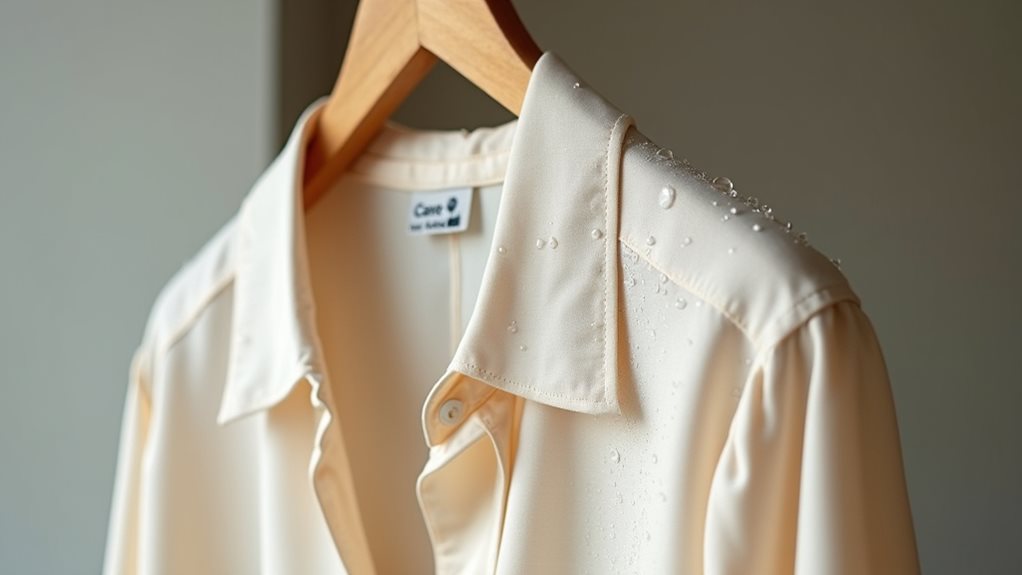
After discovering a soaked cashmere sweater in my car trunk (thanks to a leaky water bottle that I’d forgotten about for three days), I learned that acting fast can mean the difference between saving your garment and watching hundreds of dollars disappear into fabric heaven.
When your dry clean only clothes get wet, don’t panic—grab a clean dry cloth and gently blot the wet garment to absorb moisture without rubbing, which can damage fabric fibers.
Never wring or twist the material, as this destroys the structure you’re trying to preserve. Hang to dry in a well-ventilated area away from direct heat, then rush to your professional dry cleaner and inform cleaners about exactly what happened.
Professional dry cleaners may offer specialized pre-treatment options that can address water damage and any resulting stains, though complete restoration isn’t always guaranteed depending on the fabric and extent of exposure.
Which Fabrics Are Most Vulnerable to Water Damage
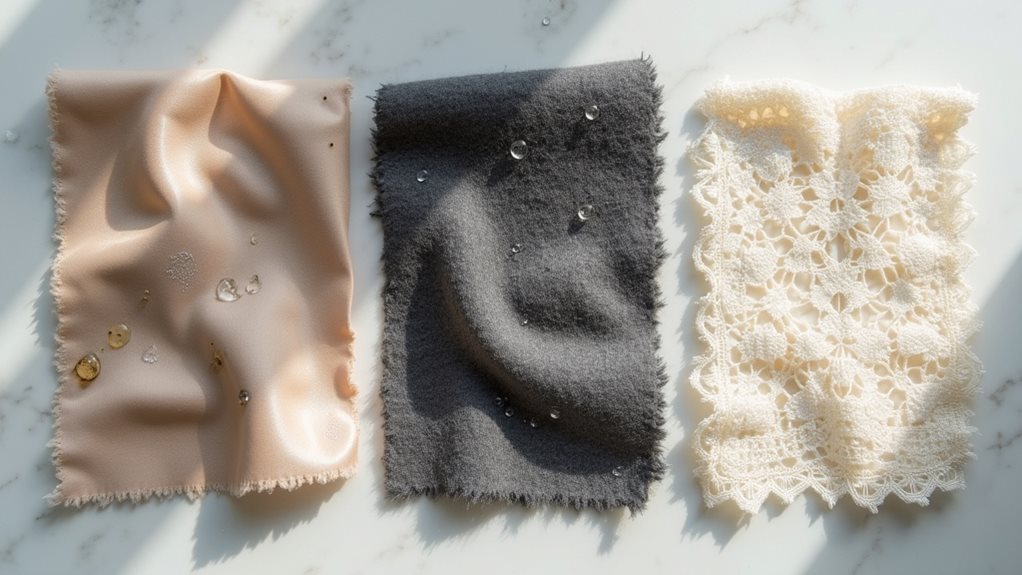
While quick action can save many garments from water disasters, not all fabrics respond equally well to moisture, and understanding which materials are most at risk will help you prioritize your rescue efforts and set realistic expectations for recovery.
Your most vulnerable dry clean only clothes include silk, velvet, and wool—these fabric types can shrink, distort, or lose shape faster than you can say “wardrobe malfunction.”
Silk, velvet, and wool are water’s worst enemies—these fabrics shrink and distort before you can blink.
Delicate garments like lace and chiffon become discolored or weakened when wet, while synthetic fibers such as rayon lose their structural integrity entirely.
I’ve learned the hard way that water damage affects vintage pieces with embellishments most severely, as moisture compromises delicate stitching and causes dye bleeding throughout the garment.
Water can also cause natural fibers like wool and silk to contract unevenly, which is why professional dry cleaning using specialized solvents is always the safer choice for maintaining these delicate materials.
Professional Vs At-Home Recovery Methods
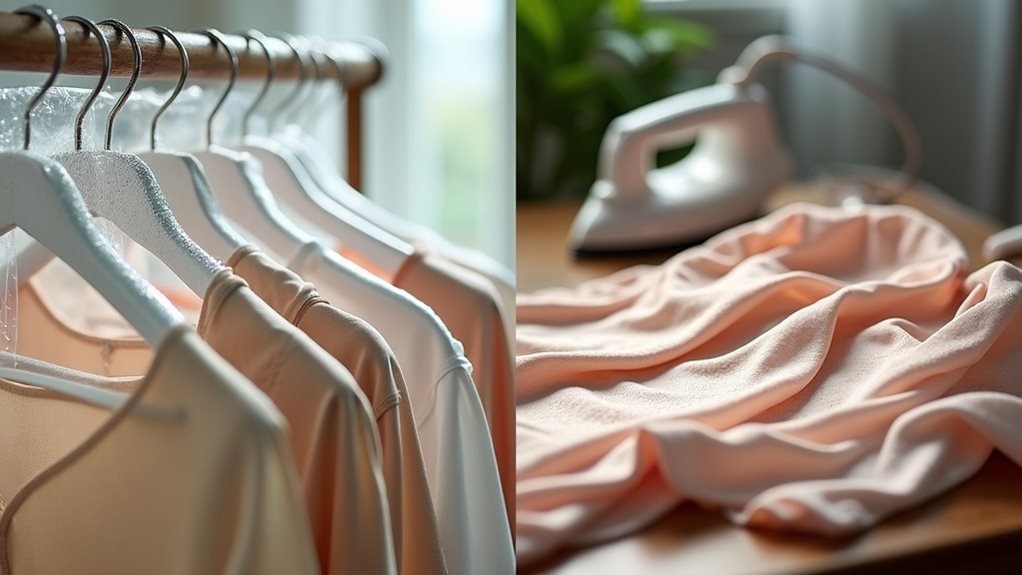
Since I’ve personally watched both professional cleaners work miracles and attempted my own disastrous rescue missions, I can tell you that the choice between professional and at-home recovery methods often determines whether your favorite garment becomes a cautionary tale or a success story.
When your dry clean only clothes get wet, professional dry cleaning utilizes specialized solvents that can salvage delicate fabrics without causing additional damage.
At-home recovery methods, while tempting for your wallet, often fall short when dealing with structural issues or deep stains.
Professional dry cleaners use chemical solvents like perchloroethylene or eco-friendly alternatives that are specifically designed to clean delicate materials without the risks associated with water-based cleaning.
Before attempting any DIY approach, always perform spot testing for colorfastness, because discovering your silk blouse bleeds purple dye across your bathroom counter isn’t exactly the surprise you’re hoping for!
Prevention Tips to Keep Delicates Dry and Protected
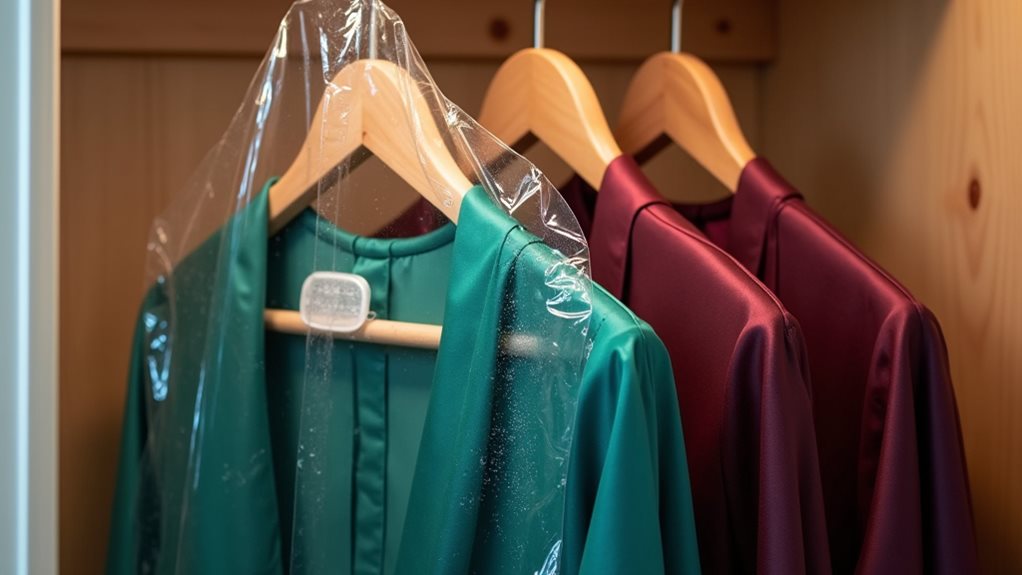
Prevention becomes your best friend when you’re trying to protect those delicate, high-maintenance pieces that seem determined to find trouble at every turn.
Store dry clean only garments in a dry place away from humidity, because moisture exposure turns your favorite silk blouse into an expensive science experiment 😅.
Invest in quality garment bags for travel – they’re like tiny protective shields for your delicate item collection.
Avoid wearing your precious pieces during questionable weather or messy activities, no matter how fabulous they make you feel.
Keep your garments happy with protective fabric spray designed for delicate fabrics, creating an invisible barrier against light moisture.
When you do need professional cleaning, consider choosing eco-friendly solvents over traditional chemical treatments to reduce potential health risks from residue exposure.
Trust me, these simple habits will save you countless trips to the dry cleaner and preserve your wardrobe investments beautifully.

